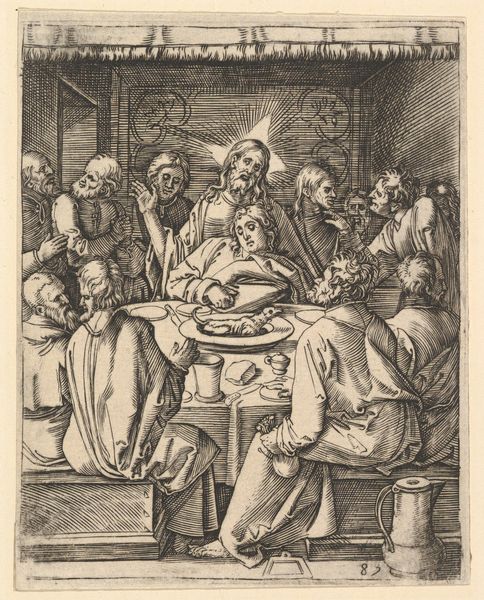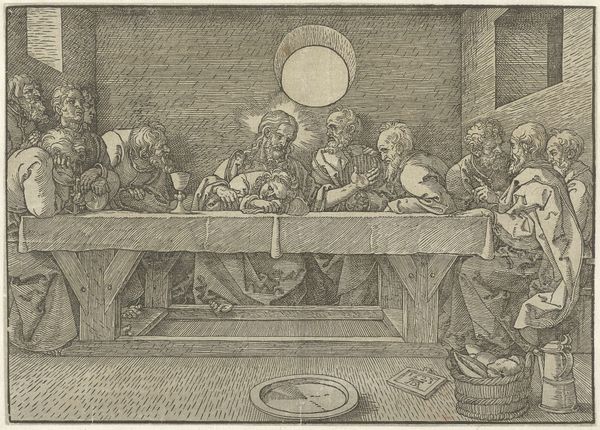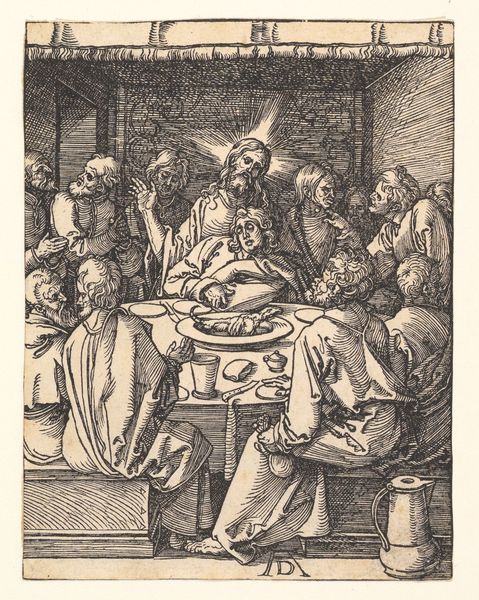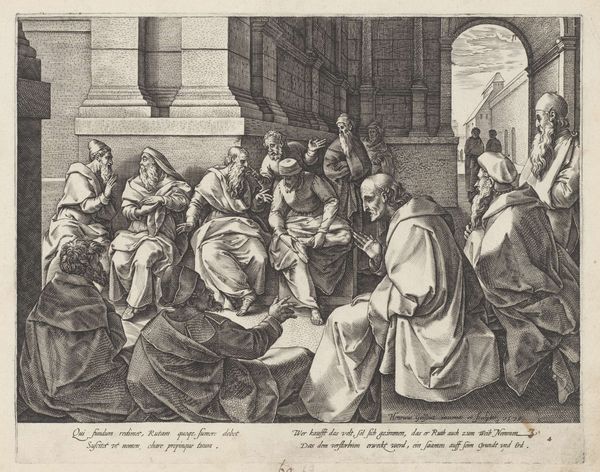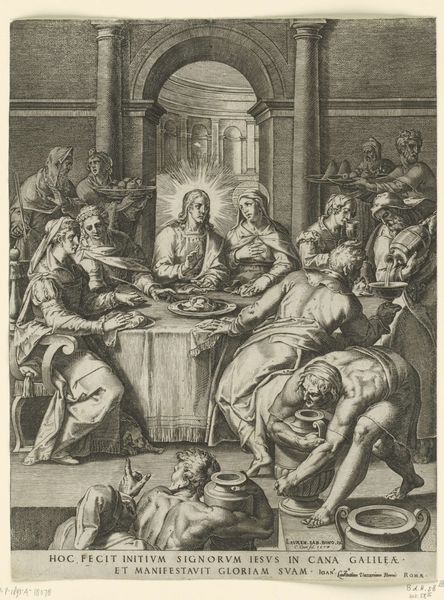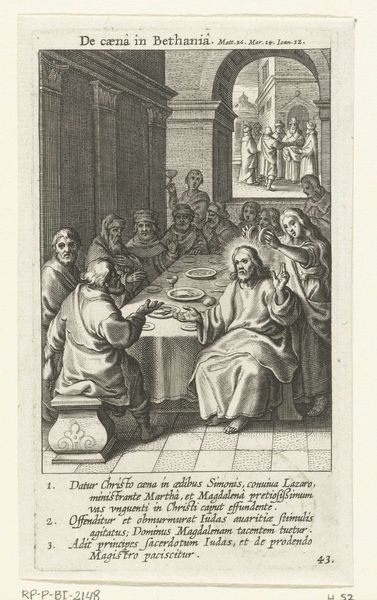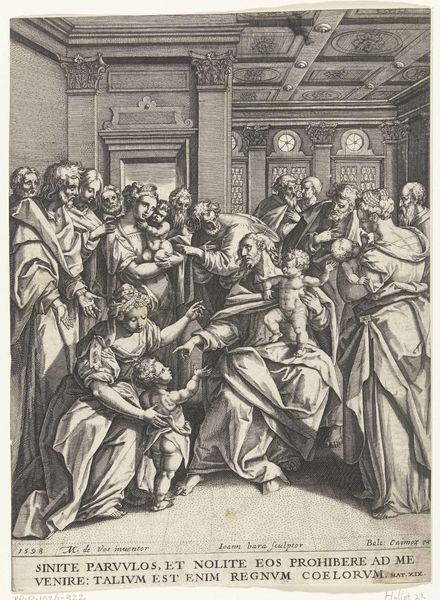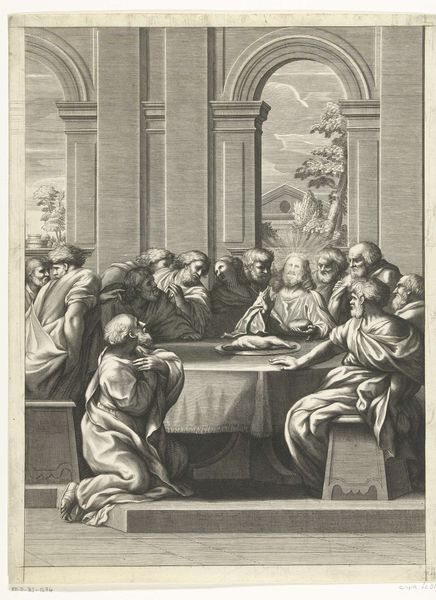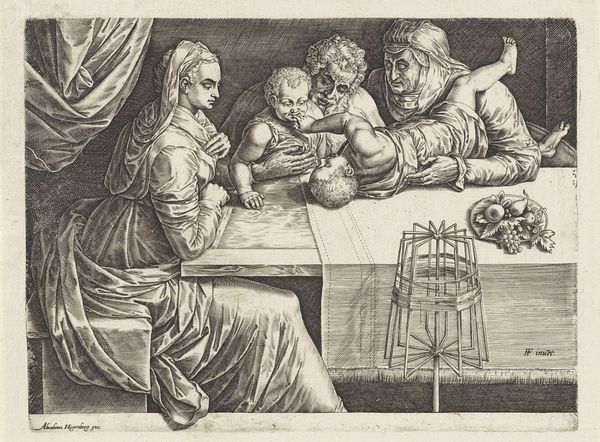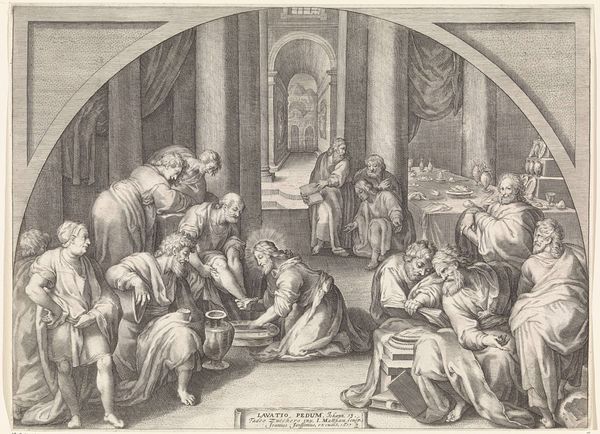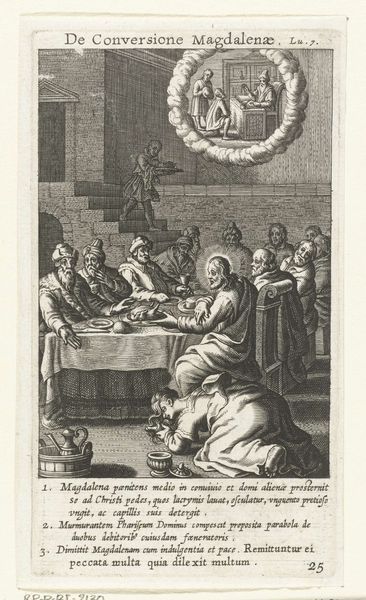
print, engraving
#
narrative-art
# print
#
figuration
#
11_renaissance
#
line
#
genre-painting
#
history-painting
#
italian-renaissance
#
engraving
Dimensions: height 273 mm, width 405 mm
Copyright: Rijks Museum: Open Domain
Editor: This is "The Last Supper" by Jacob Matham, dating back to somewhere between 1601 and 1605. It’s an engraving, currently held in the Rijksmuseum. It has such a detailed, busy composition, with all those figures packed into the scene. How do you interpret the meaning behind this choice of composition and the general feeling the artwork gives the viewer? Curator: Well, let's consider the role of prints like this during that time. Engravings such as Matham's "Last Supper" were vital means of disseminating religious imagery to a broader public, particularly during the Counter-Reformation. Think about the politics of imagery—the Catholic Church was keen to reassert its authority, and visually compelling scenes from the Bible became crucial propaganda. Editor: So, you're saying that prints had a social and political function then? Curator: Exactly. How does the composition itself strike you in terms of how it might serve a religious purpose? Does it feel theatrical? Does it evoke the scale of the holy text? Editor: Definitely theatrical! All the characters are engaging with Christ and one another and, especially the strong chiaroscuro. This almost stage-like presentation would create awe and, perhaps, guide the viewer's devotion. Is that right? Curator: Precisely. Matham also disseminates the artwork and vision of Paulo Veronese which reinforces his socio-economic and artistic influence. So, in appreciating Matham's print, we see a fascinating interplay between religious doctrine, the accessibility of art through printmaking, and a historical example of how imagery shaped societal values and artistic legacy. Editor: I had not considered that prints themselves would shape beliefs. Curator: That’s right. By examining these works through their socio-historical role, we gain a deeper understanding of their original function and continuing cultural significance.
Comments
No comments
Be the first to comment and join the conversation on the ultimate creative platform.
